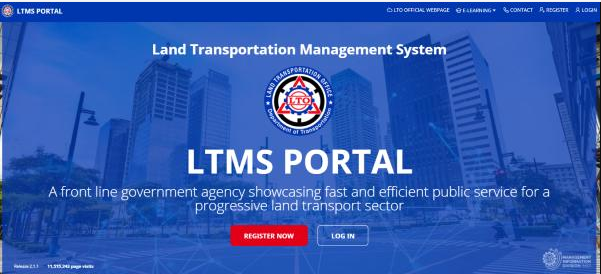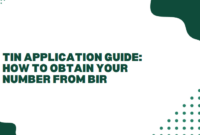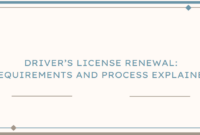Goldpriceph.com – LTO car registration is a crucial part of vehicle ownership in the Philippines, ensuring that all vehicles on the road are legally compliant and safe to operate. Whether you’re a seasoned driver or a new car owner, understanding when and how to renew your vehicle registration with the Land Transportation Office (LTO) can save you from unnecessary fines and penalties. The process might seem daunting at first, but it’s relatively straightforward if you know the steps and timing involved.
From remembering deadlines to gathering necessary documents, there are a few random challenges that every vehicle owner faces. Timely renewal ensures you remain on the road without any legal hiccups. By learning the right procedures, you can breeze through the renewal process and keep your vehicle registration up to date with the LTO, ensuring you remain compliant with national road safety standards.

Buying a car is just the first step in vehicle ownership-registering it is a whole different process. Before you can legally drive your new vehicle, it’s important to complete your LTO car registration. If you already own a vehicle, keeping your registration up-to-date is crucial by renewing it with the LTO on time.
Failure to register or renew on schedule can lead to fines and potential issues with traffic authorities. While the LTO car registration process might seem overwhelming, understanding where to begin can make things smoother. This guide will walk you through registering a new car and renewing your existing car registration, including using the Land Transportation Management System (LTMS).
LTO Car Registration for New Vehicles
Numerous car dealerships in the Philippines offer a complimentary three-year LTO registration when purchasing a new vehicle. Once this initial period expires, car owners are responsible for renewing the registration on their own. Fortunately, transparency has improved for customers, as the LTO now mandates that dealerships clearly display the processing times for vehicle registration.
This requirement helps ensure that dealers are held accountable and that vehicle owners have a better understanding of the registration process. By providing more visibility into these timelines, car buyers can make more informed decisions and have confidence in the timely registration of their vehicles.
When handled by the dealership, the registration process follows these steps:
- The car owner submits the required documents.
- The dealer processes the registration within 2-3 days.
- The sale and initial registration are reported to the LTO within 1-2 days.
- The LTO registers the vehicle and issues the Certificate of Registration (CR) and plate number.
- The dealer contacts the car owner to claim their documents and plates.
However, if you prefer to handle the process independently, here’s how to register your new car with the LTO.
Steps for Registering Your Vehicle with the LTO
Step 1: Gather the Necessary Documents
The required documents vary based on the type of vehicle (e.g., locally assembled, completely built units, imported vehicles, trailers, and electric vehicles). The general documents include:
- Original sales invoice
- Insurance Certificate of Cover (Third Party Liability)
- Certificate of Stock Reported (CSR)
- PNP-HPG Motor Vehicle Clearance Certificate
Additional requirements may apply for motorcycles with sidecars, tax-exempt vehicles, used-imported vehicles, vehicles acquired through public bidding, and others. Make sure to check the specific requirements for your type of vehicle.
Step 2: Visit an LTO Office
Contact the nearest LTO office to confirm their availability before heading there.
Step 3: Submit the Required Documents
At the LTO, submit your documents to the evaluator for assessment. Fees will be calculated based on your vehicle and registration type.
Step 4: Inspection and MVIR Submission
Your vehicle will undergo inspection by an LTO officer. Ensure you have your Motor Vehicle Inspection Report (MVIR) ready.
Step 5: Pay Registration Fees
Typical fees include:
- Stickers and tags: ₱50 each
- License plate: ₱450
- Inspection fee: ₱115
- Refer to LTO’s complete list for any additional fees.
Step 6: Collect Your Documents
Once everything is processed, you’ll receive your Certificate of Registration, plates, and stickers. Be sure to complete your registration before driving, as the LTO enforces a strict “No Registration, No Travel” policy, with steep penalties for non-compliance.
LTO Car Registration Renewal Process
Once the initial three-year car registration period ends, it becomes necessary to renew your vehicle’s registration to prevent any penalties. Failing to do so can lead to fines, as the Land Transportation Office (LTO) imposes strict regulations on timely renewals. If the registration isn’t renewed by the due date, a penalty of ₱200 will be charged for each week of delay.
If the renewal is delayed by more than a month, the penalty escalates to 50% of the Motor Vehicle User’s Charge (MVUC), making the costs significantly higher. Vehicle owners should be mindful of this timeline to avoid these additional charges. The longer the delay, the more expensive the renewal process becomes.
Furthermore, driving an unregistered vehicle comes with its own set of severe penalties. If caught, motorists can face fines of up to ₱10,000. Staying on top of your vehicle registration ensures compliance with the law and prevents the financial strain of these potential fines.
Renewal Schedule
The schedule for renewing car registration is based on your plate number. The last digit of the number indicates the month you should renew, while the second-to-last digit determines the week.
General Requirements for Renewal
To renew your registration, gather the following documents:
- Tax Identification Number (TIN)
- Insurance Certificate of Cover (Third Party Liability)
- Motor Vehicle Inspection Report (MVIR)
- Certificate of Emission Compliance (CEC)
How to Renew Online via LTMS

If you want to avoid the long lines at LTO offices, you can now renew your registration online using the Land Transportation Management System (LTMS). Here’s how:
- Obtain a Certificate of Coverage (COC) from your insurance provider, which will be electronically transmitted to LTMS.
- Get your vehicle inspected at a Private Motor Vehicle Inspection Center (PMVIC). The inspection report will also be sent to LTMS.
- Log in to the LTMS portal and complete the online renewal.
- Pay the renewal fees online and receive a confirmation receipt via email.
LTO Renewal Fees
The fees for renewing your car registration are the same as for the initial registration, with an additional renewal fee of ₱400. You must also pay the MVUC, which helps fund road maintenance in the Philippines.
Vehicle Inspection Process for Renewal
Your vehicle must pass an inspection as part of the renewal process. This can be done at an LTO-accredited facility or a private inspection center. Be sure to bring your official receipt, Certificate of Registration, and other necessary documents.
Helpful Tips for LTO Registration and Renewal
- Register for an LTO Client ID on the LTMS portal beforehand to streamline your visit.
- Arrive at the LTO early to avoid long wait times.
- Ensure your vehicle is well-maintained and ready for inspection.
- Avoid engaging with fixers or unauthorized individuals offering quick processing services.
By following these steps and staying organized, you can ensure a smooth process for registering or renewing your vehicle with the LTO. Remember to plan ahead and stay compliant with LTO regulations to avoid fines and penalties.
Conclusion
Renewing your LTO car registration is a vital responsibility for every vehicle owner in the Philippines. Ensuring your registration is up-to-date not only keeps you compliant with the law but also helps maintain the integrity of road safety standards. By understanding the timeline for renewals, following the prescribed steps, and preparing the necessary documentation, the process becomes more straightforward and stress-free.
Delaying or neglecting your car registration can result in fines and inconvenience, so it’s crucial to stay informed about the renewal schedule based on your license plate’s last digit. With proper planning, you can avoid long lines and penalties, ensuring your vehicle remains roadworthy and legal. Being proactive in renewing your car registration is a simple but effective way to support responsible vehicle ownership.





